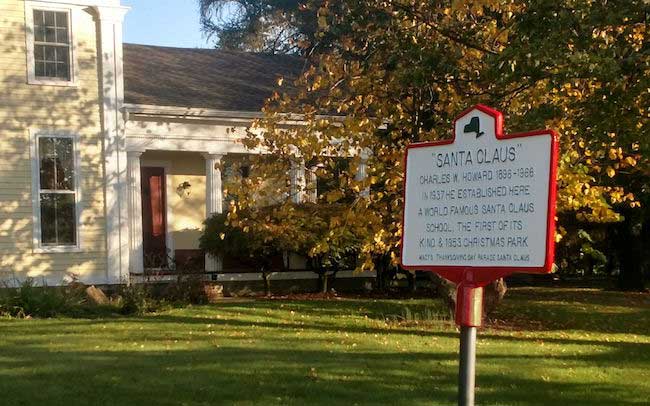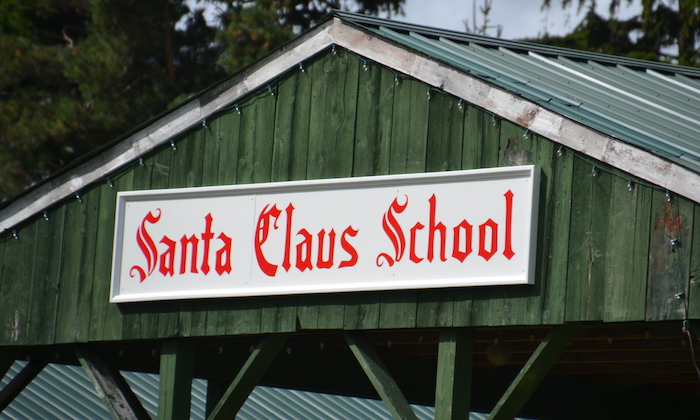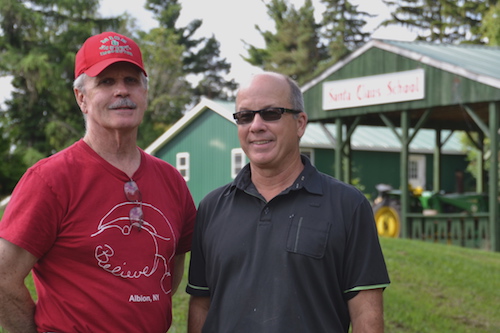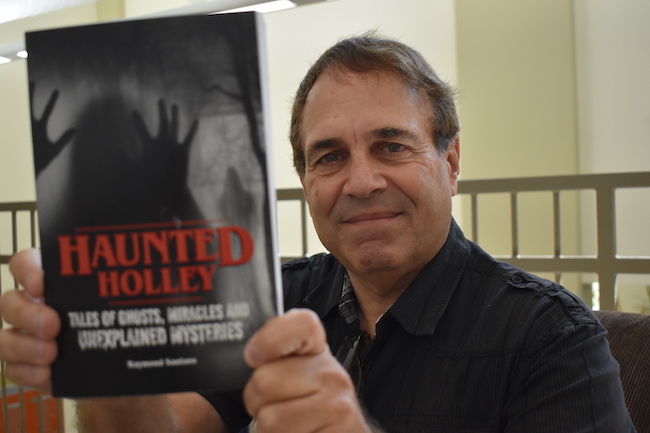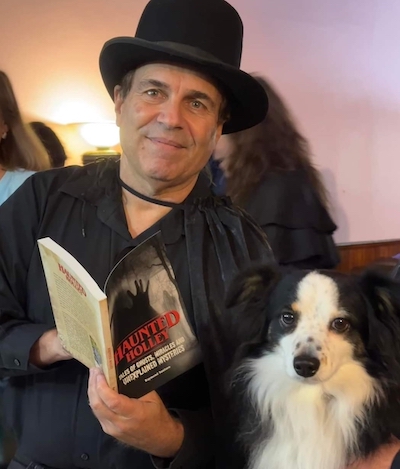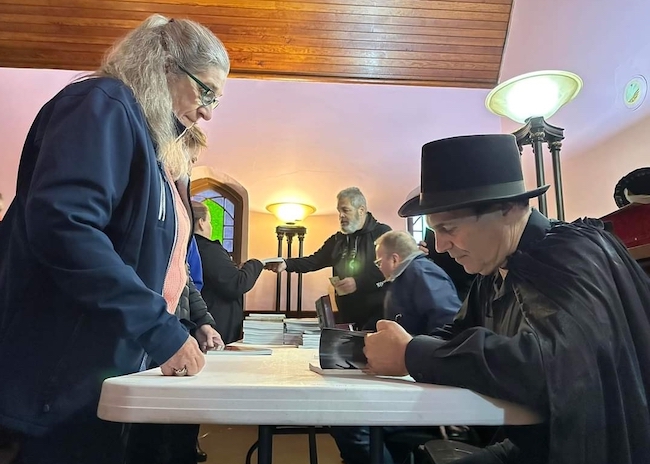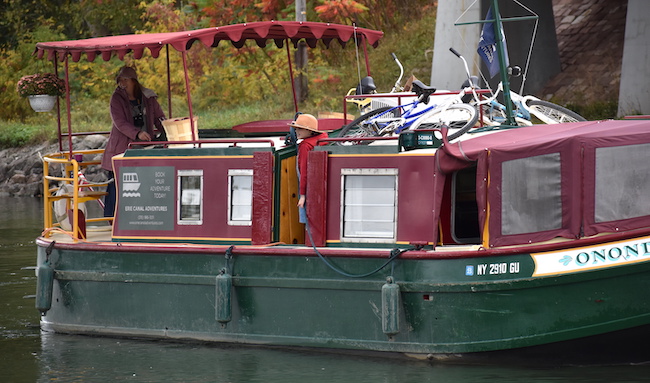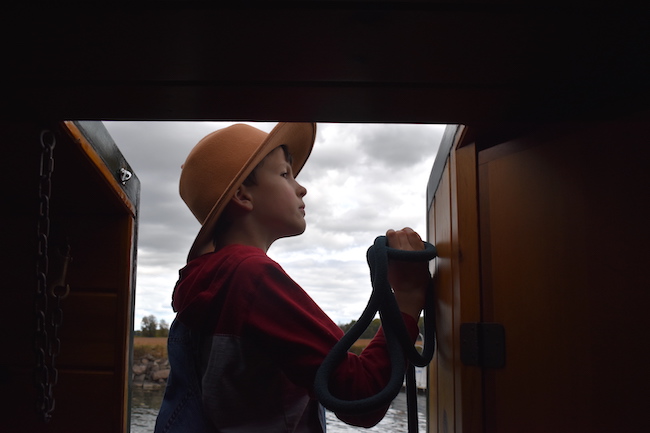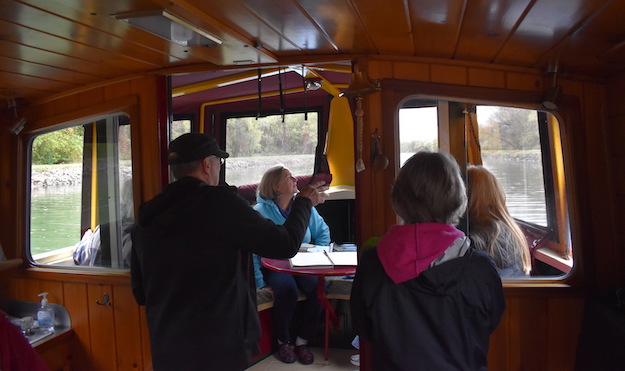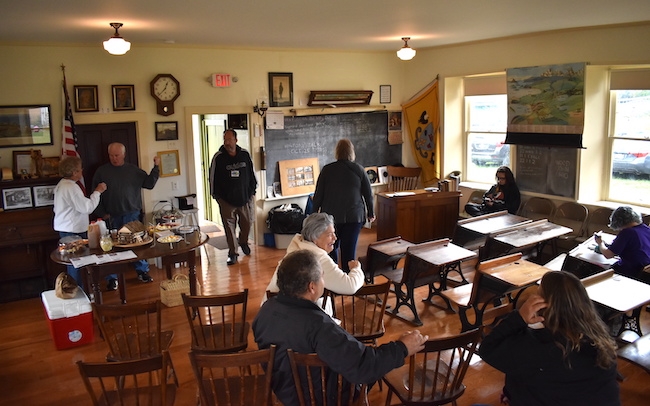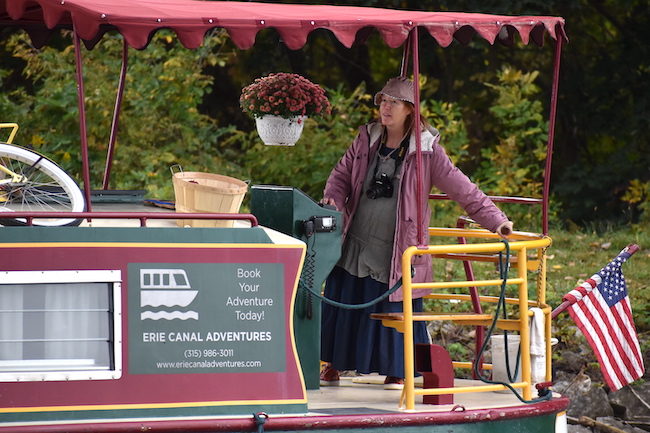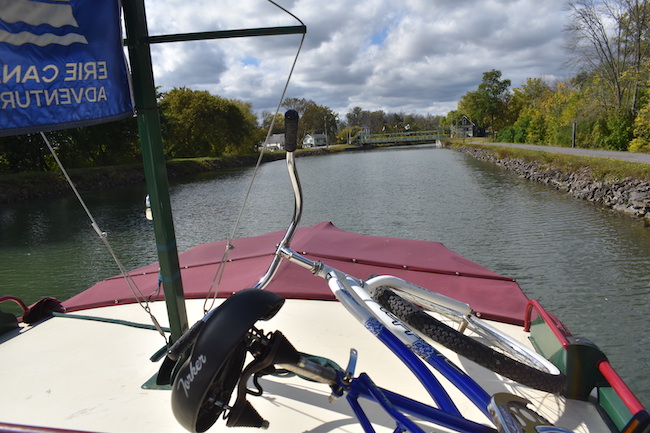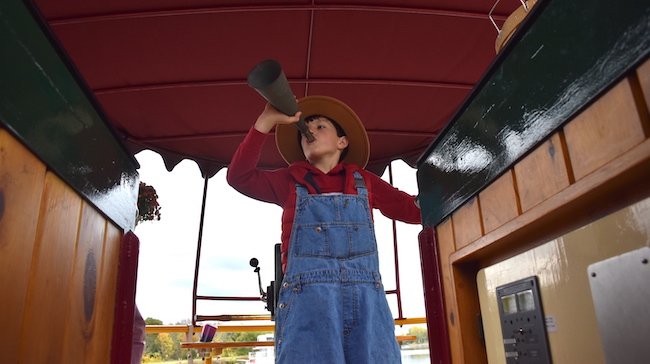Fancher Memorial restoration also recognized by preservation organization
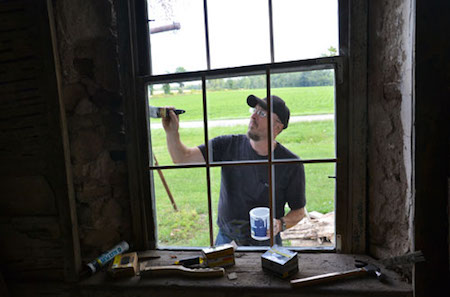
Photos by Tom Rivers: Bill Lattin, in this photo from August 2015, paints the trim on a window of the Gaines Basin Schoolhouse, a former one-room schoolhouse he helped to save from the brink of ruin.
ROCHESTER – The Landmark Society of Western New York is honoring Bill Lattin for a lifetime achievement award for his decades of work preserving numerous local sites, and his efforts to highlight local history.
The Landmark Society also will present a stewardship award to the Cobblestone Museum for its 60 years as a caretaker of properties that are a National Historic Landmark.
The Town of Murray also is receiving a special citation for its effort to restore the Fancher War Memorial on Route 31 in Fancher, a monument to 10 soldiers killed in World War II.
The awards will be presented during a virtual ceremony on Dec. 12.
Bill Lattin – Jean France Special Achievement Award
Lattin will receive the Jean France Special Achievement Award which recognizes “accomplishments that have occurred over a lengthy period of time.”
Lattin has been a caretaker and storyteller of Orleans County history for the past 50 years. He is officially retired as Orleans County historian and Cobblestone Museum director. He served in those roles for 35 years. (He retired from the museum in 2010 and from the county on Dec. 31, 2014.)
But he remains an active force in preserving important local sites and documenting history.
“Bill has advocated for local history for over six decades, through countless tours and publications,” the Landmark Society said. “The foremost authority on all aspects of Orleans County history, Bill continues his involvement with preservation and museum programming, lifetime commitments for this accomplished community activist.”
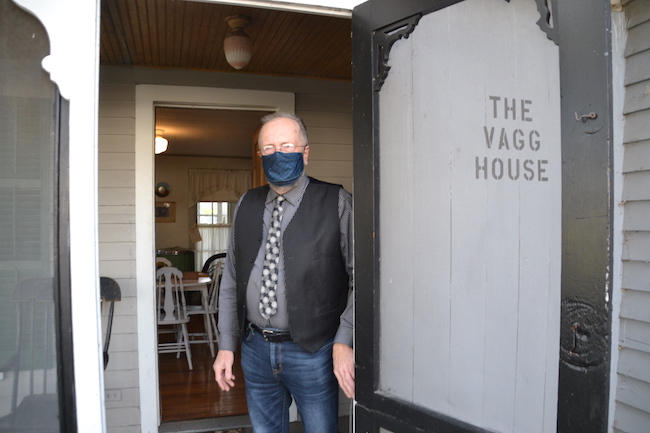
Bill Lattin welcomes visitors to the Vagg House on Nov. 7, 2020 following the Cobblestone Museum’s annual meeting. Lattin led the transformation of the Vagg House, at the corner of routes 98 and 104, into a home decorated in the 1920s and ’30s. Lattin spearheaded the restoration of many of the sites on the museum’s campus in the past 40 years.
After the Cobblestone Museum acquired the Vagg House at the corner of routes 98 and 104 last year, Lattin led the efforts to curate the former home of blacksmith Joe Vagg and his wife Nellie, who was active in the temperance movement. The house is filled with antiques and is decorated the in a 1920s, ’30s theme, with many of the early electrical appliances. Lattin even built an outhouse for the site to help it match the others on the museum’s grounds.
The Vagg House is a new “jewel” in the Cobblestone Museum’s crown, said Doug Farley, the museum’s current director. The house can be used for small gatherings of less than 30 people, such as meetings, rehearsal parties or teas, and other museum events.
In 2020, Lattin also helped relocate a log cabin built by Boy Scouts in 1930. It went from an Albion backyard to behind a cobblestone school built in 1832 on Gaines Basin Road. Lattin has been a key worker on saving that school in recent years. He has handyman skills and deep connections to rally the community to a cause. That school and the log cabin are recent examples. But that mission started long ago. He was a key leader of the Save the Tower committee that raised $30,000 in the mid-1970s for the Civil War Memorial at Mount Albion Cemetery. Lattin has given new life to many local structures.
Cobblestone Society and Museum – Stewardship Ward
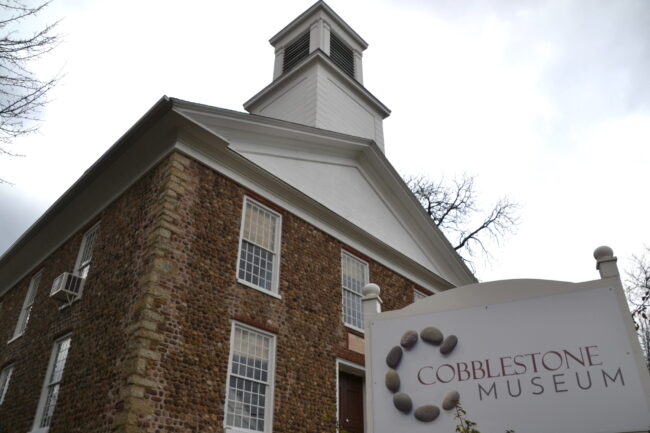
The Cobblestone Museum will be honored with a stewardship award for its care of a campus that is a National Historic Landmark and includes this church that was built in 1834.
The Cobblestone Society and Museum will be presented the Stewardship Award for its efforts preserving and maintaining three cobblestone buildings – a church, a home and a school – on Route 104, and for saving other sites in the museum campus, including outhouses, a former town hall, harness shop, print shop and voting booth and other important community artifacts.
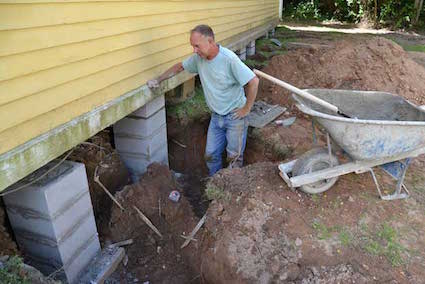
Kevin Breiner, a mason from Brockport, works on one of 14 new concrete piers underneath Farmers Hall at the Cobblestone Museum, in this photo from August 2019. The building was previously the Kendall Town Hall. It was taken apart and reassembled in 1978 at the Cobblestone Museum on Route 98. It’s one of several recent repair projects at the museum.
The Stewardship Award recognizes an individual or organization that has provided continued care of and commitment to the preservation of an architecturally and/or historically significant public property over a period of years.
“For 60 years, this organization has focused on the history and architecture of this iconic type of stone masonry,” the Landmark Society said. “Highlighted by one of the largest cobblestone churches in North America, their multiple-building campus is the only designated National Historic Landmark in Orleans County. The museum maintains an extensive archives, as well as the on-going Cobblestone Info Base, with data on all known cobblestone buildings in the U.S. and Canada.”
The museum recently announced it is working to acquire the 1834 “Brick House,” a stately red brick home with six fireplaces. The museum wants to put on an addition to make the site a visitor’s center with new modern bathrooms and meeting space for up to 100 people at the intersection of routes 98 and 104. The museum has raised more than $400,000 out of a $750,000 goal for the initiative.
The site would be an Orleans County welcome center and would promote businesses and other tourism sites in the county.
Fancher War Memorial – Special Citation
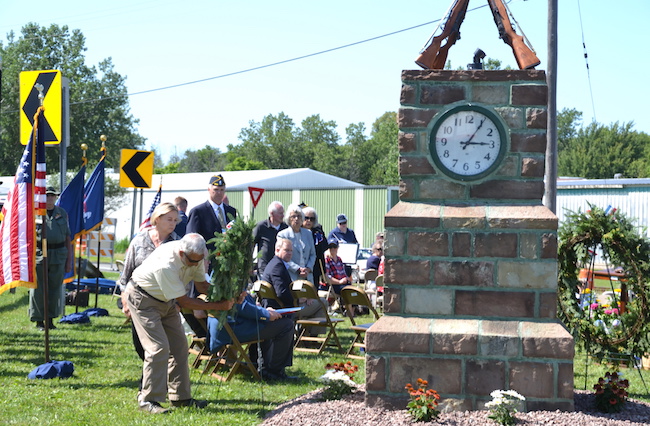
The Fancher Memorial was rededicated on Aug. 14. Richard Christopher of Albion places a commemorative wreath by the monument in Fancher. Richard is the son John Christopher, who was killed on November 26, 1943 when the transport ship carrying his unit was struck by a German glider bomb and sunk off the coast of Algeria. He was laid to rest at the North Africa American Cemetery in Tunis, Tunisia. John’s brother Joseph also was killed during the war. Another pair of brothers from the Fancher community – Leonard and Martin Licursi – also died in the war.
The Landmark Society picked the restoration of the Fancher War Memorial for a Special Citation. The monument at the “Fancher Curve” on Route 31 honors 10 local soldiers who were killed in World War II.
The memorial is a four-faced clock in a stone monument made of local sandstone. It gradually deteriorated over 72 years.
The crumbling mortar was chipped out and replaced with new matching green mortar. New movements for the clocks and new electrical service were installed. The flag pole was painted. New sandstone pavers were added as a walkway on the north side of the property.
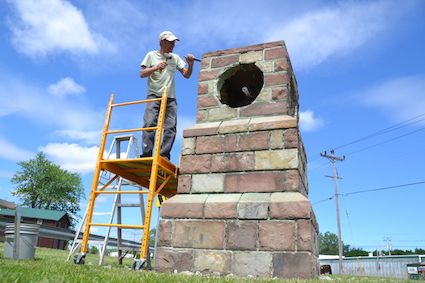
Neal Muscarella, a mason from Albion, chips away old and loose mortar on May 27 on the Fancher Clock, a World War II Memorial at the curve on Route 31 on the east side on Murray. Muscarella put in new mortar, matching the original color green. He said this is the only sandstone structure that he has seen with green mortar.
And a new bronze plaque was mounted on the north side near the flagpole. The original plaque remains, but it is on the west side facing the guardrails and wasn’t in an easy-to-see location for most people to know the true purpose of the monument.
“The restoration of this unique World War II memorial was achieved via a remarkable partnership of town government, local historical society and a former Fancher resident/philanthropist,” the Landmark Society said. “With repairs completed by local craftsmen, the Medina stone tower, with clock, was re-dedicated this year, exactly 72 years after its original dedication in 1949.”
Local mason Neal Muscarella replaced the mortar, matching it to the original green. Dan Mawn put in new electric.
The Fancher community built the memorial out of local Medina sandstone as a tribute to 10 local soldiers who died in World War II. Those soldiers include John Christopher, Joseph Christopher, Cosmo Coccitti, John Kettle, Jr., Leonard Licursi, Martin Licursi, Richard Merritt, Camille Nenni, Floyd Valentine and Richard Vendetta.
About 200 people attended the rededication ceremony on Aug. 14, including family of some of the soldiers honored with the monument.
Town Supervisor Joe Sidonio said it should be clearer now that the site isn’t a municipal clock, but is a war memorial dedicated to local soldiers who died serving the country.
The project was funded with a donation from Fred Fiorito, a former local resident who now lives in the New York City area. He would typically home a few times each year to see family, including his brother Ted Fiorito. Fred noticed the memorial gradually deteriorate and wanted it to be a fitting tribute to the 10 soldiers.
